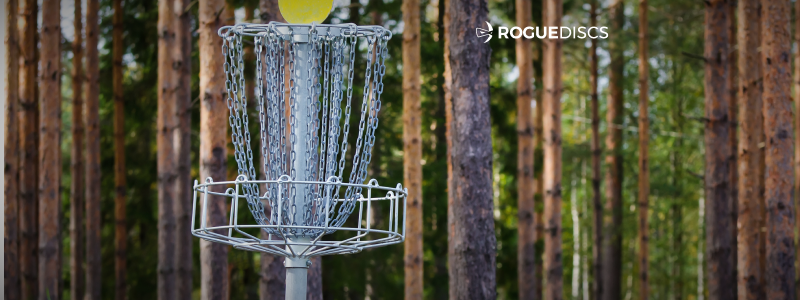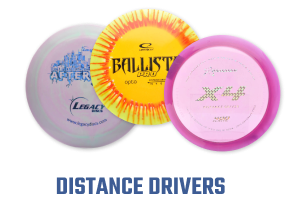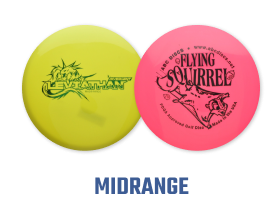
Let me see a show of hands of who wants to read about rules?! OK, I get it. But rules are a necessary part of all sports; especially disc golf. Our sport is played through varying terrain with a multitude of obstacles. For this matter, the PDGA has a rule book that governs all PDGA sanctioned events. Just as in all competitive sports, rules are implemented to ensure an equal playing field for all competitors. While we may not like certain rules, they are crucial aspects of tournament play. It is always better to be equipped with this knowledge than find out the hard way and get a penalty.
This article explains the 5 most important rules for tournament play:
- 1. Order of Play
- 2. Putting Area
- 3. Out-of-Bounds
- 4. Marking the Lie and Stance
- 5. Player Misconduct (Alcohol)
PDGA Rule 802.02- Order of Play
- A. Throwing order on the tee of the first hole is the order in which the players are listed on the scorecard(s).
- B. Throwing order on all subsequent tees is determined by the scores on the previous hole, so that the player with the lowest score throws first, and so on. Ties do not change the throwing order.
- C. After all players have a lie other than the teeing area, the player whose lie is farthest from the target (the away player) is next in the throwing order.
While in casual play it may behoove the flow of the round to play ready golf (i.e. throw whenever you are ready), tournament rounds adhere to a throwing order. If you are unsure who is up or if you are furthest out be sure to speak up. This rule keeps a clear flow to a round so there is no misunderstanding of the order of play. This rule also makes it so players must pay attention to their own play relative to their competitions on the card. This can be helpful for maintaining focus. When I am unfocused I typically lose track of my place in the order of teeing off. This can be a reminder to bring the concentration back to the forefront.
PDGA Rule 806.01- Putting Area
- A. Any throw made from within 10 meters of the target, as measured from the rear of the marker disc to the base of the target, is a putt.
- B. After having released a putt, the player must demonstrate full control of balance behind the marker disc before advancing toward the target. A player who fails to do so has committed a stance violation and receives one penalty throw.
This rule is extremely important as it is broken the most by beginners in tournaments. In ball golf, there is a physical green that has shorter grass and is very clear when to pull out your putter. In disc golf, we have a 10 meter (33’ish feet) rule. The basket is at the center of this circle. Measure out 10 meters in all directions and you have yourself a green. This is important because inside of 10 meters you must hold your stance after releasing your disc. You must do so until the disc has come to rest either in the basket or on the ground. If you end up falling forward and place a body part on the ground in front of your lie you are given a stroke penalty.
This rule can be challenging for players who are used to putting and following through with their body. This very much pertained to me as I began my competitive career. I had to hit the practice putting green and make sure to create a solid stance within which to putt inside of 10 meters. This made me a better player but as we all know, our putting form is made of clay and is in a constant state of change!
PDGA Rule 806.02- Out-of-Bounds
- A. An out-of-bounds (OB) area is an area designated by the Director from which a disc may not be played, and within which a stance may not be taken. The out-of-bounds line is part of the out-of-bounds area. Any area of the course that is not out-of-bounds is in-bounds…
- D. A player whose disc is out-of-bounds receives one penalty throw. The player may play the next throw from:
- 1. The previous lie; or,
- 2. A lie designated by a marker disc placed on the playing surface at any point on a one-meter line that is perpendicular to the out-of-bounds line at the point where the disc was last in-bounds.
The disc must be completely surrounded by the out-of-bounds area to be considered OB. Meaning that if 99% of the disc is out of bounds but is touching one blade of grass from in bounds, the disc is considered in bounds. Courses vary with how much OB they use. Even if you have played a course many times make sure you have a clear understanding of what is in bounds and what is OB. Oftentimes a TD will mark areas OB to make a course more challenging for a tournament. The TD should cover this in the players meeting before the tournament but be sure to ask clarifying questions if they arise.
PDGA Rule 802.06- Marking the Lie and PDGA Rule 802.07- Stance
- A. The position of a thrown disc on the in-bounds playing surface marks the lie.
- B. Alternatively, the player may mark the lie by placing a mini marker disc on the playing surface, touching the front of the thrown disc on the line of play. A mini marker disc is a small disc, not used in play, that complies with PDGA Technical Standards for mini marker discs.
Stance
- A. If the lie has been marked by a marker disc, then when the disc is released, the player must:
- 1. Have at least one supporting point that is in contact with the lie; and,
- 2. Have no supporting point closer to the target than the rear edge of the marker disc; and,
- 3. Have all supporting points in-bounds.
The lie has an area of 20cm wide by 30cm deep directly behind the marker disc. This is where one supporting point of contact must reside. If you have a second limb supporting you, it must be behind this line that is perpendicular to the basket. Again, inside of 10 meters you must hold your stance until the disc has come to a rest. Outside of 10 meters you must simply release the disc with at least one supporting point in the lie area. Then upon release you are free to bring your momentum past your lie and support yourself in front of your disc.
PDGA Rule 3.03 Player Misconduct (Alcohol)
The Tournament Director (TD) has sole discretion to disqualify any competitor who breaks the following rule:
- 5. Public display or use of alcohol, even where otherwise lawful or permitted from the two-minute warning until the player’s scorecard is submitted at an event sanctioned at C-Tier level or below (see 303.C.4 for penalties at events sanctioned at B-Tier or above). This rule does not apply to L-Tier events, where, if event venue rules permit it, players of legal age may consume alcohol during the round.
From what I have seen, this rule is the most often rule that is broken at PDGA tournaments. Many players will casually have a drink during fun rounds but this doesn’t fly at tournaments. Most tournament directors will explain this rule at a meeting before the round to reinforce it to the competitors. They’ll say something to the tune of, “NO drinking from the two minute warning until you turn in your scorecard. It can wait!” I have seen people get away with it and I have also seen people get kicked out of tournaments. Is it worth it? This rule is in the rule book for the sanctity of the sport. Please respect the sport and, if need be, consume your beverages before or after your round.
Conclusion
I highly recommend checking out the official PDGA Rule Book as it has all of this information and much more. This will kickstart your tournament journey and help you to settle into your tournament rounds. After all, our sport is self-regulated and most players do not want to have to call penalties on their fellow competitors. And remember, always ask your cardmates about rules if you are unclear. Study up and enjoy your tournament journey!




